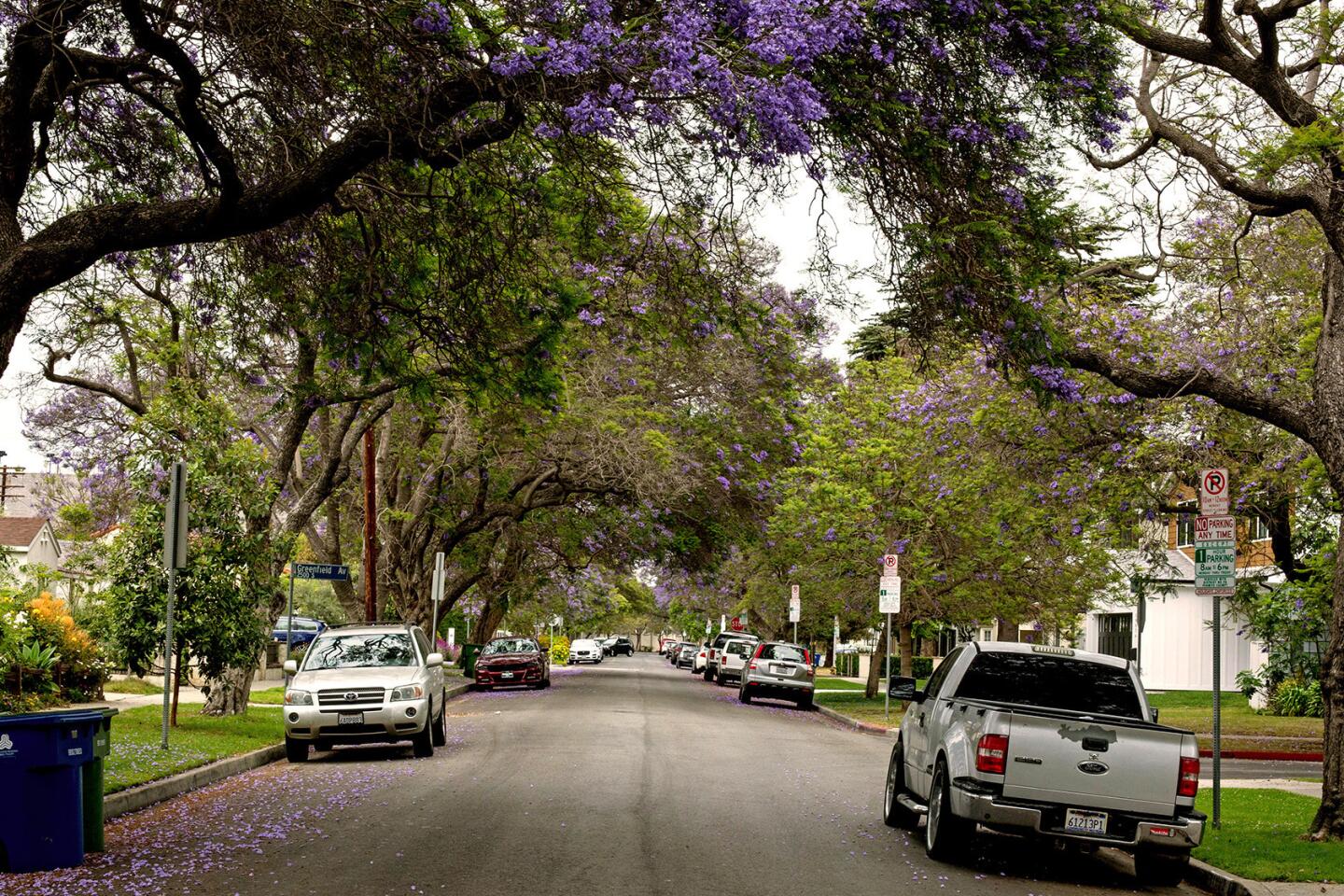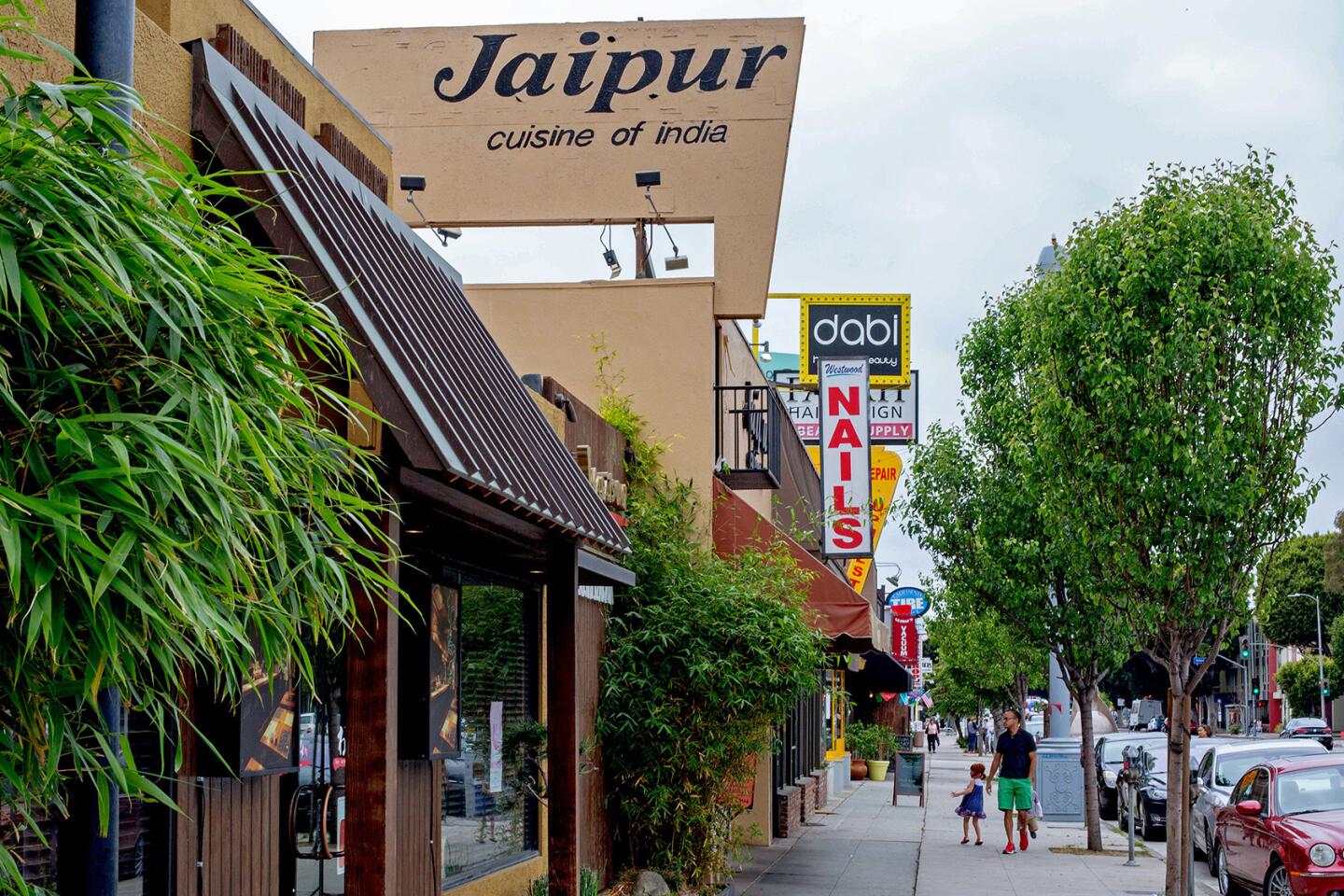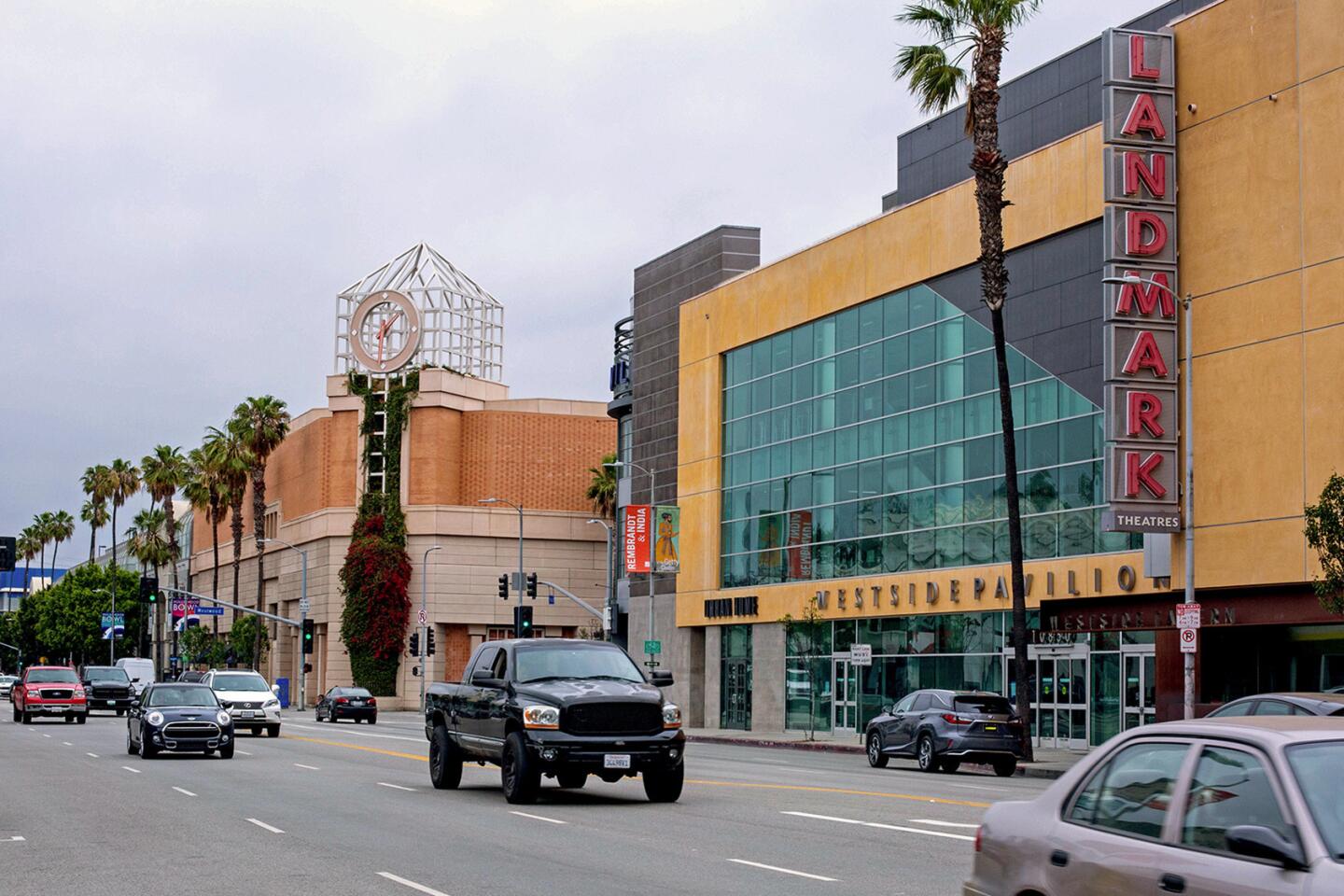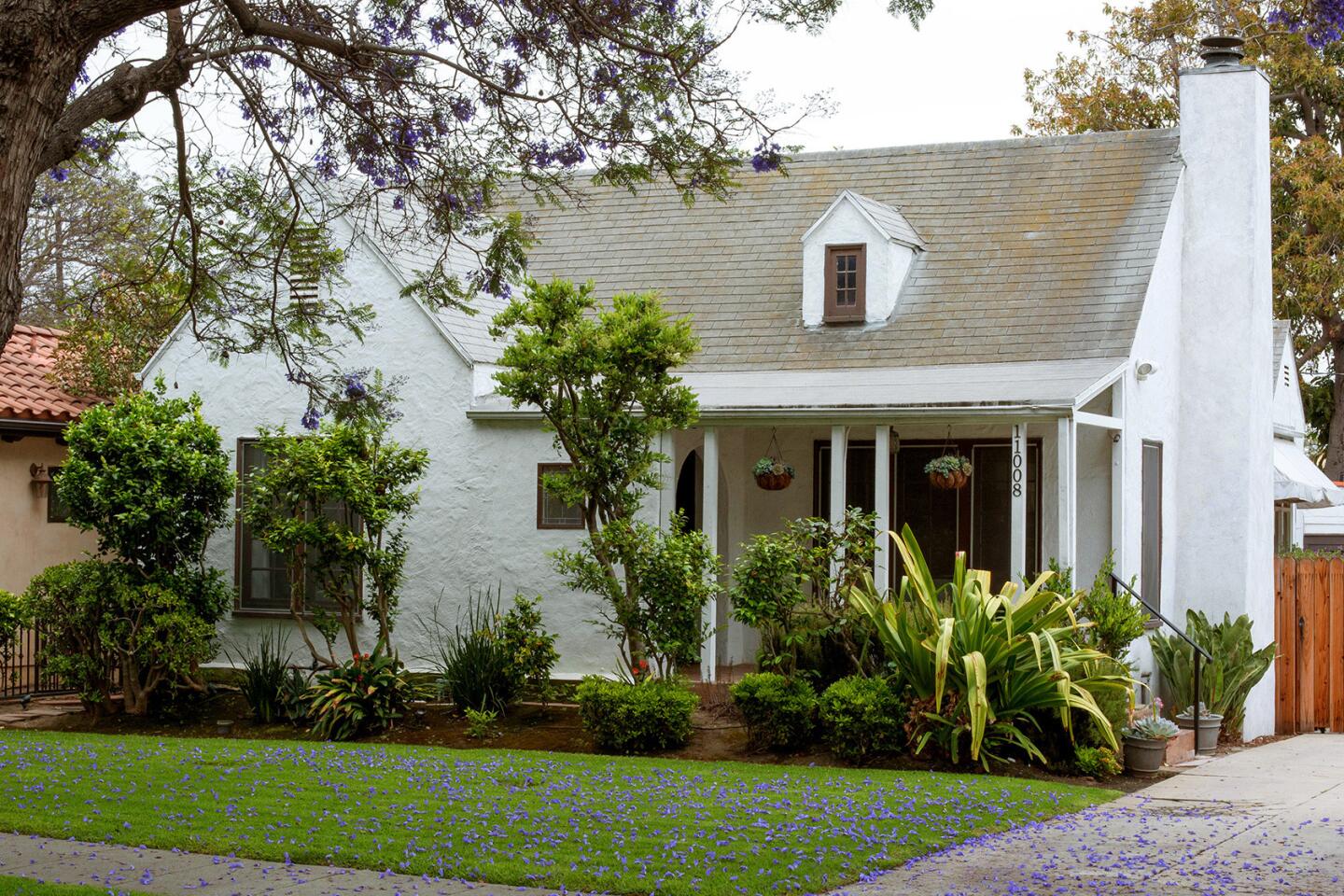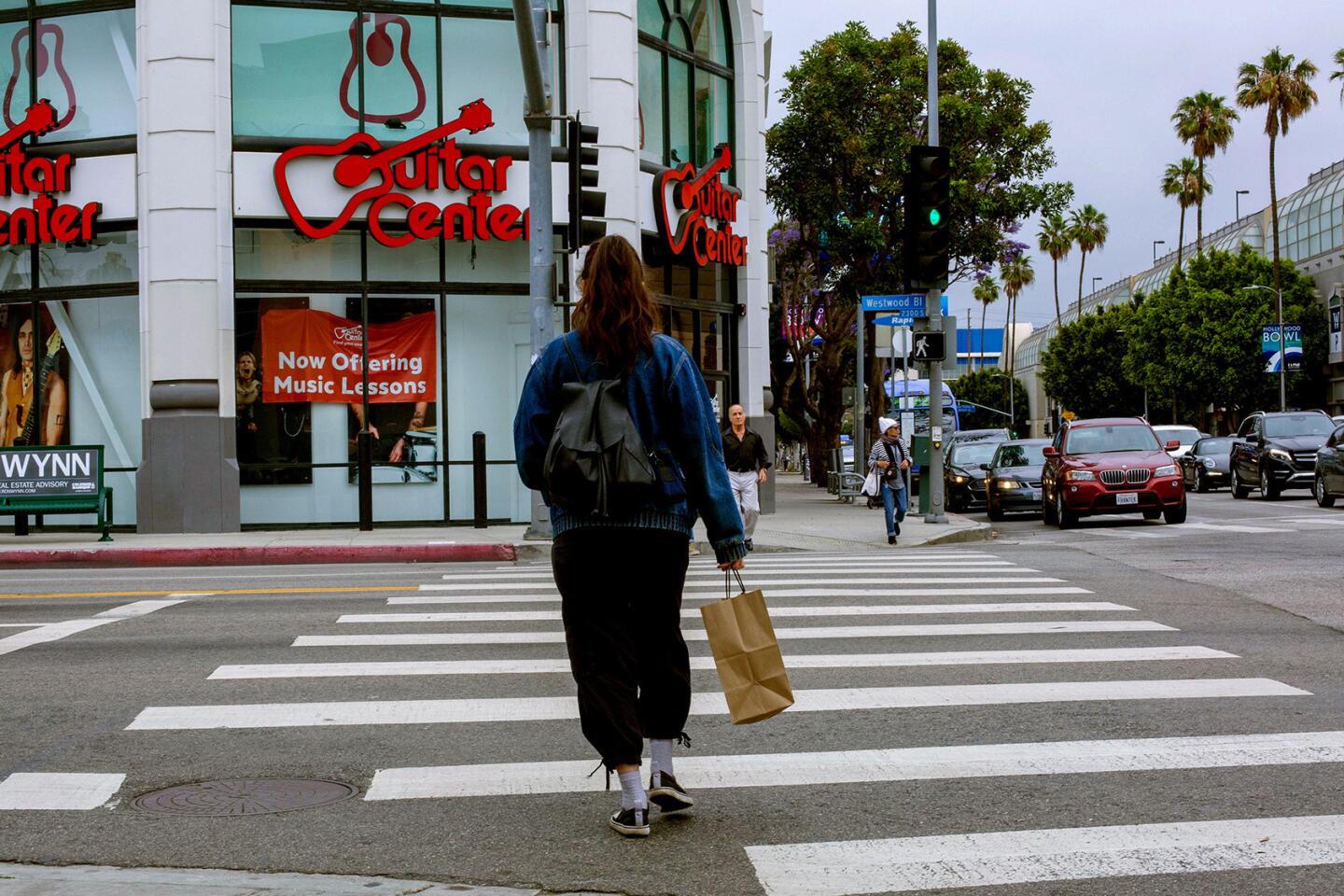Neighborhood Spotlight: Rancho Park takes its spot in a post-modest world
Rancho Park, like much of the Westside of Los Angeles from the arrival of Europeans in the region until the real estate boom of the 1920s, was once given over entirely to agricultural uses.
Originally a cattle range dubbed Rancho Rincón de los Bueyes (“the corner of the oxen”), it later became one of the vast bean fields that, along with citrus orchards, produced some of early L.A.’s most famous exports.
With the growing metropolis bursting at the seams as its population exploded after the opening of the Los Angeles Aqueduct in 1913, residential developers began taking advantage of the availability of cheap farmland in the western reaches of town.
One of those developers was the Janss Investment Co., a family-run concern that built homes across Southern California from the late 1800s to the 1990s. With car ownership becoming more common, it realized that a fundamental shift in the way people traveled across the city was on the way.
Having a short walk to work or being in proximity to a streetcar line was becoming a less important factor for potential home buyers than the opportunity to live on a clean, quiet tree-lined street far from the din and clamor of downtown or Hollywood.
The Janss Co. stepped in to fill that demand, purchasing land that stretched from Bel-Air in the north to the railroad trench of the Santa Monica Airline train in the south. The northern end of its holdings became Westwood and Westwood Village, and the southern end was developed as Westwood Hills.
When Olympic Boulevard was extended westward through Westwood in 1936, those residents south of the new boulevard decided to break with their larger neighbor to the north and rebrand their community of modest homes as Rancho Park.
As the greater Westside became the center of gravity that pulled wealth and jobs away from central Los Angeles toward the sea, Rancho Park soon found itself becoming a highly desirable neighborhood, especially with the advent of nearby Century City.
Lawyers, agents and bankers no longer had to shlep downtown or to Beverly Hills to work but could live the Westside dream, sans soul-crushing commute, in Rancho Park. Unfortunately, the smallish homes of Rancho Park were not sufficiently ostentatious enough for these new residents, and so began a wave of mansionization that continues today.
Neighborhood highlights
A canopy of trees: Rancho Park’s tree-lined streets give it an almost suburban feel, as well as provide a rare opportunity for Angelenos to see fall foliage without a long drive north.
Take a stroll: Those same trees provide plenty of shade for pedestrians taking the short walk to the shops and restaurants on Pico or to play a round of golf at one of the nearby courses.
Get there from here: With its own Expo Line station, easy access to the 10 and 405 freeways, and many arterial streets nearby, Rancho Park makes commuting slightly more convenient.
Neighborhood challenges
Big boxes: Across the neighborhood, older homes are being torn down in order to make way for large modern houses that often span the entire lot and tower above their neighbors.
Cut-through traffic: Like many residential neighborhoods near freeways, Rancho Park has struggled with the increased cut-through traffic created by new navigation apps such as Waze.
Expert insight
Sean McMillan, an agent who’s lived in Rancho Park for 52 years and worked in real estate for 33, said the area’s many draws have brought it from a blue-collar community to an upper-middle-class haven.
“Rancho Park’s resources, its proximity to the city, its schools and its diversity have all caused housing prices to increase exponentially over the past few decades,” McMillan said.
He added that the neighborhood council is very active, weighing in on everything from natural-gas burn-off to flight patterns of the Santa Monica Airport. Its latest initiative, the Pick Pico 2018 Street Fair, showcased the businesses and vendors of Pico Boulevard to 5,000 people.
“The presence of massive nearby employers like Fox Studios and UCLA also factor into the growth here,” McMillan said.
As a result, many of the postwar builds of around 1,000 square feet are disappearing in favor of modern traditional-style homes, Cape Cods and Craftsmans.
Market snapshot
In the 90064 ZIP Code, based on 19 sales, the median sales price for single-family homes in March was $2.03 million, up 11.9% year over year, according to CoreLogic.
Report card
No public schools fall within the Rancho Park boundaries. Two elementary schools in the area scored exceptionally well on the 2013 Academic Performance Index: Overland Avenue Elementary, at 946, and Fairburn Avenue Elementary, at 940.
The closest public high school, Beverly Hills High, scored 865.
Times staff writer Jack Flemming contributed to this report.
More to Read
Sign up for Essential California
The most important California stories and recommendations in your inbox every morning.
You may occasionally receive promotional content from the Los Angeles Times.
